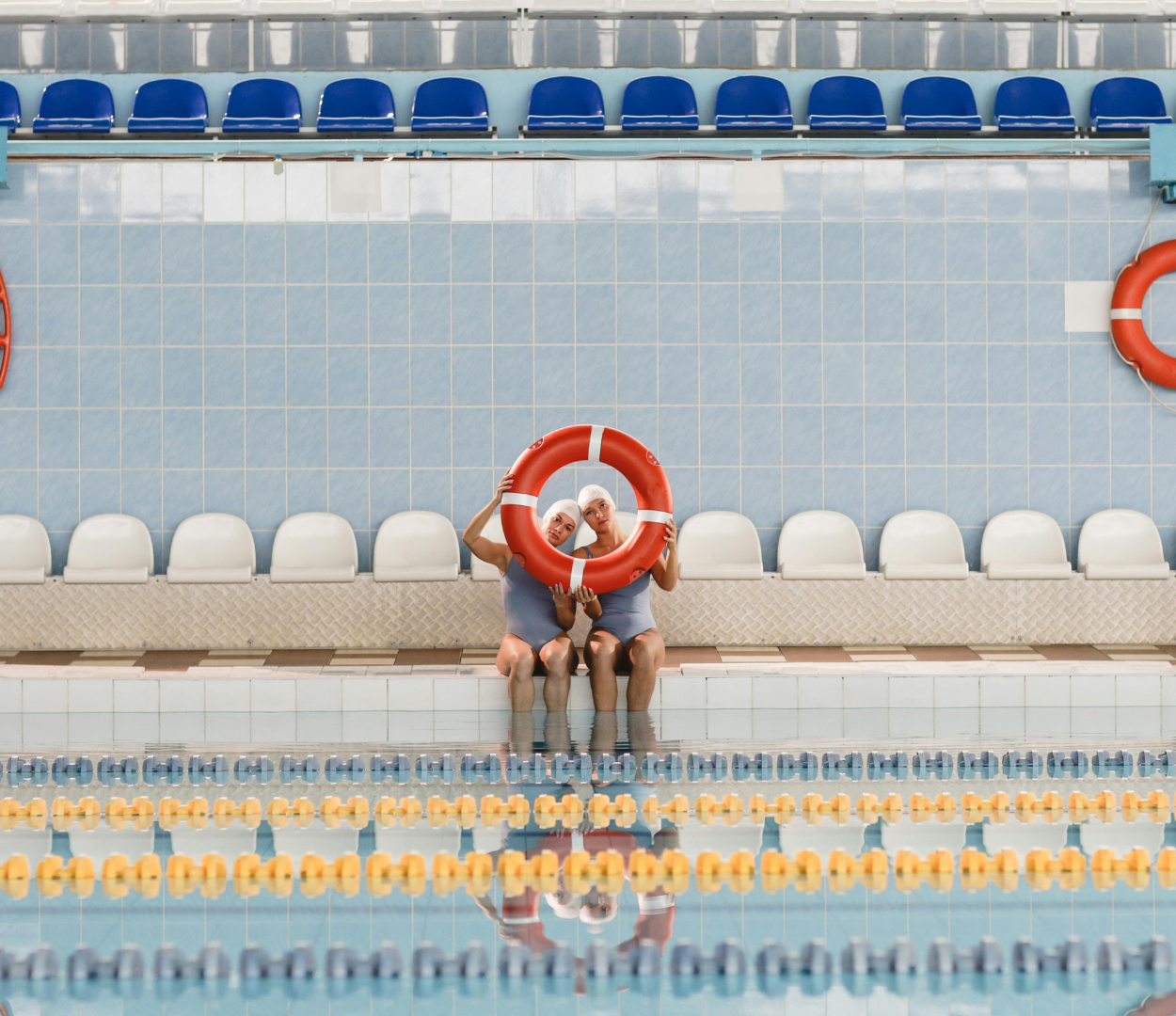Introduction
Summer is the perfect time to take a refreshing dip in the pool, but have you ever wondered if the water could make you sick? While swimming pools are designed for recreation and fun, they can also harbor various contaminants and pathogens that can pose health risks. These contaminants can come from human waste, environmental factors, or chemical imbalances in the pool water. In this article, we'll explore the potential dangers of swimming pool water and provide you with valuable insights to stay safe and healthy during your pool adventures.
Swimming Pool Contaminants: What You Need to Know
Swimming pools can become contaminated with a wide range of substances, including bacteria, viruses, parasites, and chemical by-products. These contaminants can enter the pool water through various sources, such as human waste, environmental factors, and chemical imbalances.
Human Waste: Fecal matter, vomit, and bodily fluids can introduce harmful pathogens into the pool water. Even a small amount of fecal matter can contain millions of germs, including bacteria like E. coli, Salmonella, and Shigella, as well as viruses like Norovirus and parasites like Cryptosporidium and Giardia. These pathogens can cause diarrheal diseases, which can quickly spread through contaminated water.
Environmental Factors: Dirt, leaves, and other debris can carry microorganisms into the pool. These contaminants can come from the surrounding environment, such as trees, animals, or even the air. They can introduce bacteria, fungi, and other pathogens that can thrive in the warm, moist environment of a swimming pool.
Chemical Imbalances: Proper chemical levels, such as chlorine and pH, are crucial for maintaining a safe and healthy pool environment. Improper chemical levels, such as low chlorine or high pH, can create an environment conducive to microbial growth. Low chlorine levels can allow bacteria, viruses, and other pathogens to survive and multiply, while high pH levels can reduce the effectiveness of chlorine disinfection.
Common Waterborne Illnesses Associated with Swimming Pools
Exposure to contaminated pool water can lead to a variety of waterborne illnesses, ranging from mild to severe. Here are some of the most common ones:
-
Recreational Water Illnesses: These illnesses are caused by germs spread by swallowing, breathing in mists or aerosols, or having contact with contaminated water. RWIs can be caused by a variety of pathogens, including bacteria, viruses, and parasites. Examples include:
- Diarrheal Diseases: Caused by bacteria like E. coli, Salmonella, and Shigella, as well as viruses like Norovirus and parasites like Cryptosporidium and Giardia. These illnesses can cause severe diarrhea, abdominal cramps, nausea, and vomiting, and can be particularly dangerous for young children, the elderly, and those with weakened immune systems.
- Respiratory Illnesses: Caused by bacteria like Legionella, which can lead to Legionnaires' disease, a severe form of pneumonia. Legionella bacteria can thrive in warm, stagnant water and can be spread through aerosolized water droplets from hot tubs, showers, and cooling towers.
- Skin Infections: Caused by bacteria like Pseudomonas and Staphylococcus, resulting in hot tub rash or swimmer's itch. Hot tub rash is a skin infection characterized by red, itchy bumps, while swimmer's itch is caused by a parasitic worm that can burrow into the skin, causing an allergic reaction and intense itching.
- Parasitic Infections: Parasites like Cryptosporidium, Giardia, and Naegleria fowleri (causing a rare but deadly brain infection) can be transmitted through contaminated pool water. Cryptosporidium and Giardia are particularly resistant to chlorine and can cause severe diarrheal illnesses, while Naegleria fowleri can lead to a rare but deadly brain infection called primary amebic meningoencephalitis (PAM).
- Ear Infections: Bacteria and fungi can enter the ear canal and cause outer ear infections (swimmer's ear) or middle ear infections. Swimmer's ear, also known as otitis externa, is an infection of the outer ear canal caused by bacteria like Pseudomonas and Staphylococcus. Middle ear infections, or otitis media, can occur when water enters the middle ear through the Eustachian tubes, allowing bacteria or viruses to infect the area.
- Eye Infections: Exposure to contaminated water can lead to conjunctivitis (pink eye) or other eye infections. Conjunctivitis is an inflammation of the thin, clear membrane that lines the inside of the eyelid and covers the white part of the eye. It can be caused by bacteria, viruses, or allergies, and can result in redness, itching, and discharge from the eyes.
Factors Increasing the Risk of Waterborne Illnesses
Several factors can increase the likelihood of contracting waterborne illnesses from swimming pools:
Poor Pool Maintenance: Inadequate disinfection, improper pH levels, and poor filtration can allow pathogens to thrive. Proper pool maintenance is essential to ensure that the water is adequately disinfected and that chemical levels are balanced. Inadequate chlorine levels or high pH levels can reduce the effectiveness of disinfection, allowing bacteria, viruses, and other pathogens to survive and multiply.
High Bather Load: Overcrowded pools increase the risk of contamination from human waste and bodily fluids. When there are too many people in the pool, the risk of fecal matter, vomit, or other bodily fluids entering the water increases. This can introduce harmful pathogens and overwhelm the pool's disinfection system, allowing germs to spread more easily.
Swallowing Pool Water: Accidentally ingesting contaminated water can introduce pathogens into the body. Even a small amount of contaminated water can contain millions of germs, and swallowing this water can lead to diarrheal diseases, respiratory illnesses, or other infections.
Open Wounds or Cuts: Pathogens can enter the body through open wounds or cuts, increasing the risk of infection. If you have an open wound or cut, it's best to avoid swimming in pools or other recreational water until it has healed completely. Bacteria and other pathogens can easily enter the body through these openings and cause skin infections or other illnesses.
Compromised Immune System: Individuals with weakened immune systems are more susceptible to waterborne illnesses. People with conditions like HIV/AIDS, cancer, or those undergoing chemotherapy or organ transplants may have a harder time fighting off infections from waterborne pathogens.
Preventing Waterborne Illnesses: Tips for Safer Swimming
While swimming pools can pose health risks, there are several steps you can take to minimize the chances of contracting waterborne illnesses:
- Check Pool Inspection Reports: Before visiting a public pool, check the inspection reports to ensure proper maintenance and water quality. Most public pools are required to undergo regular inspections by local health authorities, and these reports can provide valuable information about the pool's safety and cleanliness.
- Practice Good Hygiene: Shower before entering the pool, avoid swallowing pool water, and wash your hands after using the restroom or changing diapers. Showering before entering the pool can help remove dirt, sweat, and other contaminants from your body, reducing the amount of pollution introduced into the water. Avoid swallowing pool water, as it may contain harmful pathogens. And always wash your hands thoroughly after using the restroom or changing diapers to prevent the spread of germs.
- Don't Swim When Ill: If you or your child has diarrhea, avoid swimming until symptoms have resolved for at least two weeks. Diarrheal illnesses can easily spread through contaminated water, so it's important to stay out of the pool until you or your child has fully recovered.
- Wear Proper Swimming Gear: Use well-fitted swim diapers for young children and avoid swimming with open wounds or cuts. Swim diapers are designed to contain fecal matter and prevent it from leaking into the pool water. If you have an open wound or cut, it's best to avoid swimming until it has healed completely to prevent infection.
- Stay Hydrated: Drinking plenty of water can help prevent accidental ingestion of pool water. When you're properly hydrated, you're less likely to accidentally swallow pool water, reducing your risk of contracting waterborne illnesses.
- Report Concerns: If you notice any issues with pool water quality or maintenance, report them to the appropriate authorities. This could include cloudy or discolored water, strong chemical odors, or other signs of poor maintenance. By reporting these concerns, you can help ensure that the pool is properly maintained and safe for everyone to enjoy.
FAQ:
- Is it safe to swim in a pool with chlorine?Chlorine is an effective disinfectant when maintained at proper levels. It helps kill harmful bacteria, viruses, and other pathogens in the water. However, excessive chlorine levels can cause eye and respiratory irritation, while insufficient chlorine levels can allow pathogens to thrive. It's important to maintain the proper chlorine levels, as recommended by health authorities, to ensure a safe and healthy swimming environment.
- Can hot tubs pose similar risks?Yes, hot tubs can harbor various pathogens, especially if not properly maintained. The warm temperatures and aerosolized water in hot tubs can create an ideal environment for the growth of bacteria like Legionella, which can cause Legionnaires' disease. Additionally, the high temperatures can cause chlorine to dissipate more quickly, reducing its effectiveness as a disinfectant. Proper maintenance, including regular cleaning and chemical balancing, is crucial for preventing waterborne illnesses in hot tubs.
- Are saltwater pools safer than chlorinated pools?Saltwater pools use a chlorine generator to produce chlorine from salt, so they still require proper maintenance and chemical balance to prevent waterborne illnesses. While saltwater pools may have a more natural feel and potentially fewer chemical irritants, they still rely on chlorine as the primary disinfectant. Proper monitoring and adjustment of chlorine levels, pH, and other chemical parameters are essential for maintaining a safe and healthy saltwater pool environment.
- Can swimming pools cause skin rashes or allergic reactions?Yes, some individuals may experience skin rashes or allergic reactions due to chemicals like chlorine or bromine, or exposure to certain pathogens in the water. Chlorine and other pool chemicals can cause skin irritation, redness, and itching in some people, especially those with sensitive skin or allergies. Additionally, certain bacteria, viruses, or parasites in contaminated water can cause skin rashes or other allergic reactions.
- Are public pools more prone to contamination than private pools?Public pools generally have a higher risk of contamination due to the larger number of bathers and potential for improper maintenance. With more people using the pool, there is a greater chance of introducing contaminants like fecal matter, vomit, or other bodily fluids. Additionally, public pools may not always be properly maintained or have adequate staffing to ensure proper chemical levels and filtration. However, private pools can also harbor pathogens if not properly maintained and cleaned regularly.
Conclusion
Swimming pools can be a source of enjoyment and exercise, but it's essential to be aware of the potential health risks associated with contaminated water. By following proper hygiene practices, checking pool inspection reports, and being vigilant about water quality, you can minimize the chances of contracting waterborne illnesses. Remember, prevention is key to ensuring a safe and enjoyable swimming experience for you and your loved ones.
Maintaining a safe and healthy swimming environment requires regular monitoring and testing of the pool water. To help with this, consider investing in a reliable pool testing kit. Regular testing can help you identify and address any issues before they become a health hazard, giving you peace of mind and allowing you to enjoy your pool without worry.





Leave a comment (all fields required)